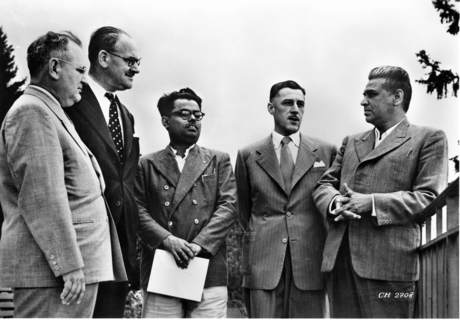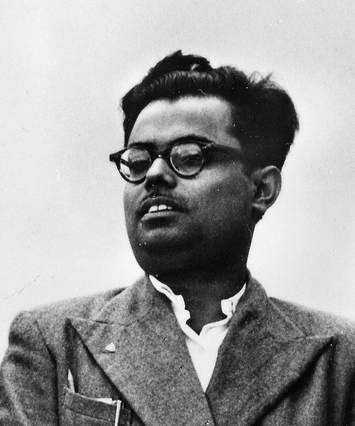Everyone enjoys the signs of the ‘little man’ standing up to the big fellows – and winning. But when a union part-time official persuades the government of the world's largest democracy to change its policy and employ his 3,000 members who had been thrown on the scrap heap, he has some secret that every redundant worker would love to know.
Satya Banerji was for twenty-five years secretary of the Light Railways Staff Association of West Bengal. His members worked the narrow gauge railways which brought thousands every day from the suburbs into the centre of Calcutta. But in the early 1970's, as waves of violence swept West Bengal and the extremist Naxalites were liquidating the moderate leadership on the streets, an outside agitator took over Banerji's job by offering the men massive bonus increases. The railway company was already losing money. When the new man served strike notice, they locked out the workforce and closed down.
"I saw all my work destroyed recalls Banerji. It fell to me to organise my fellow unemployed workers. In India there is no dole; when a man loses his job or the company shuts the door he just has to starve. And unlike Europe, every worker has a large family, seven or eight children, so it's not only his own mouth he’s concerned about."
There were already 40,000 unemployed in West Bengal. Hundreds of industries had closed. Banerji was very bitter. He had been raised in the class-war thinking and could easily have taken to violence – and probably died with his men in the streets of Calcutta. Instead he decided there must be another way. The Government-owned Indian Railways is a massive organisation. Without them, say some, India couldn't survive as a united country. Every week 67 million passengers and five million tonnes of freight pass over the 45,000 miles of track. Their workforce of 1½ million makes them India's biggest employer. Any suggestion that Banerji and his men could get jobs in the broad-gauge national system was laughable. Yet it happened. But it took two years of effort.
I asked Satya how it was done. "We knew our chances of survival depended on our unity," he said. "We kept the men together. We pooled our meager resources and went to New Delhi. Our motto was ‘Not a word of hate, not a cry of anger, but compassion and cooperation.’ It wasn't easy to keep it; sometimes we failed. We tried to appeal to the hearts of those in authority and win them over, A woman MP was so moved to hear of the pitiable condition of the sacked men, that she took us to meet Mr.G.L.Nanda, the Railway Minister. He promised to help. Then we saw the Chairman of the Railway Board and the Finance Commissioner. I think they were very surprised by our new approach and went out of their way to help us. After many months of presenting our case to officials at all levels, doors began to open. The Prime Minister was consulted and a decision was taken to absorb our 3,000 members in Indian Railways.
"But it took another year's hard work to implement the decision. We almost lived in in railway carriages in the 1,000 miles between Calcutta and Delhi. There were many practical difficulties. For instance narrow gauge drivers could not operate broad gauge engines; it took time to find equivalent jobs. At times the frustrations were almost unbearable. But we won through and all the men were taken on."
Satya is an energetic man, keen-faced and passionate yet warm-hearted and modest. He was brought up in Calcutta and loves his city with its immense problems of housing, sanitation and unemployment which create restlessness among its 10 million inhabitants. ''Why,'' I asked him ''did you not take to the streets?’ What made you take the road of peaceful persuasion? Was there some secret that gave you your quiet authority and kept you going?" Satya came straight back. "I had learned to listen to my inner voice," he said. "But for my touch with God I would not have lived to tell this story.
"He gave me new energy and answered my bitterness. That's what helped me to organise the unemployed, which is much more difficult than organising men at work."
One other question."'Why did you not seek a job with all the others?" Satya smiled. "I decided to take voluntary retirement in order to give my whole time to the industrial training programme at Panchgani (the Indian MRA Centre). This is my Iife's vocation now, to give this spirit to Labour and Management, to get a new purpose for industry, when industry will no longer be only for profit or a field for class-struggle but may give a unifying idea to solve the needs of the people. This is very much close to my heart." He went on to describe the regular seminars where workers and management spend several days together planning the development of people’s attitudes as well as material resources, which has changed the prospects of several industries.
We were talking in Australia. Why was he here? Banerji said, "I have come to encourage workers and trade union leaders here to see the play Keir Hardie, The Man They Could Not Buy. This play has moved and inspired me very much. It has taken men like me who have spent 30-40 years in the trade union movement back to our roots and helped us remember our younger days when, moved by a certain idealism, we joined the Labour Movement. The pioneers of the Indian movement had the same ideals which moved Keir Hardie. They joined the unions not for self-interest but to serve the people."
He went on "Sometimes I feel ashamed of some of my fellow trade unionists defending islands of prosperity while others are drowning in oceans of poverty. But I know a new unselfish leadership can emerge from the ranks of ordinary working people to tackle the problems of unemployment and hunger in our country."
Obviously a railwayman on the right track.
English


